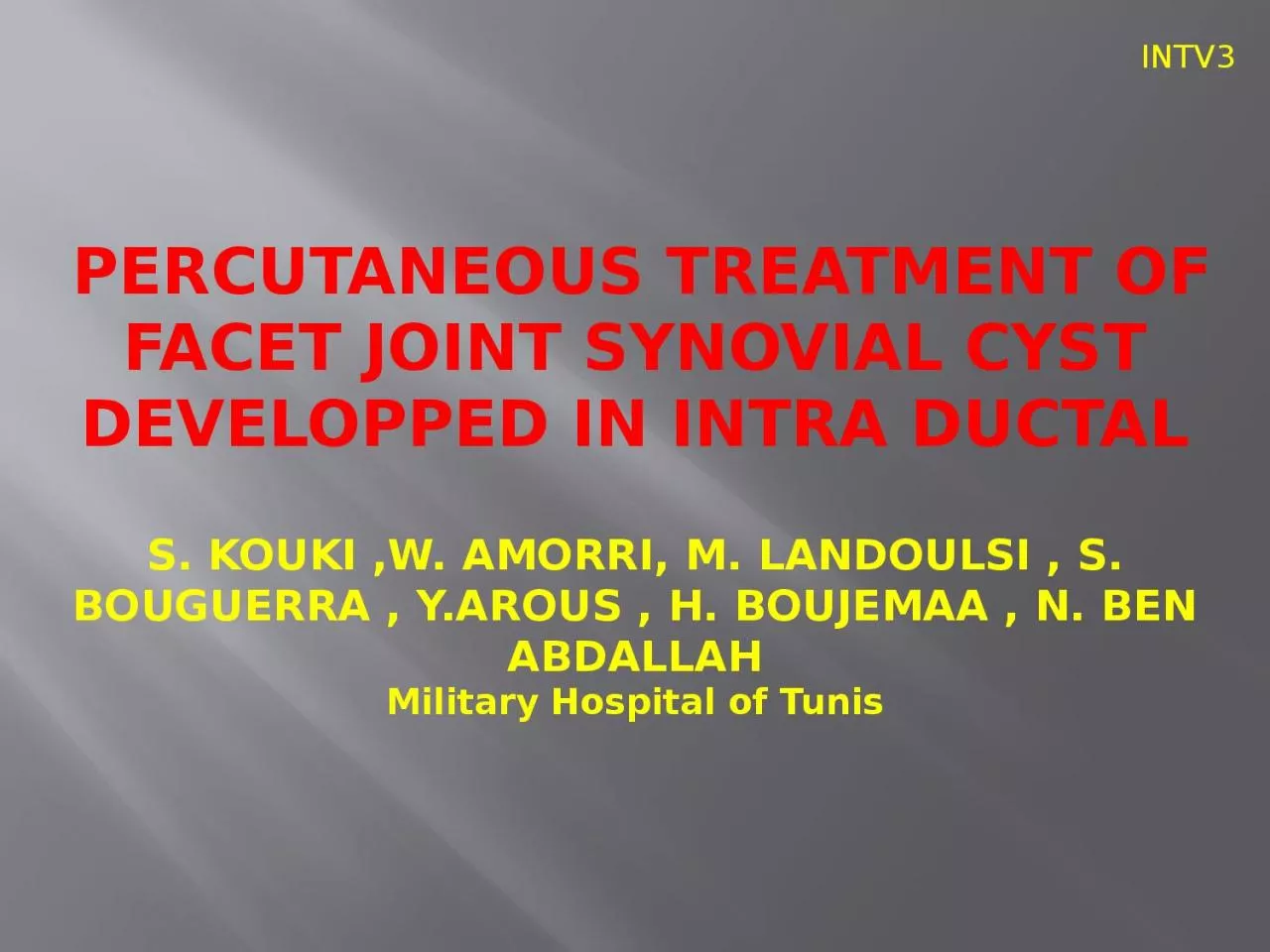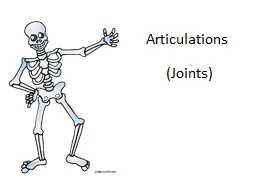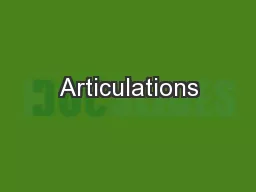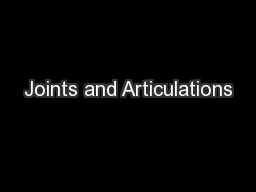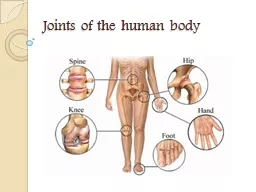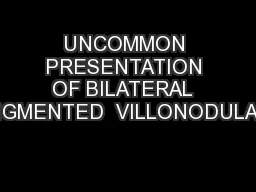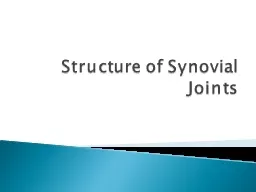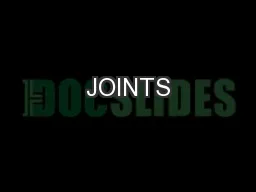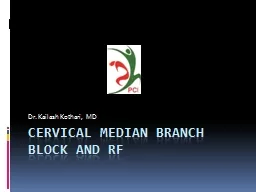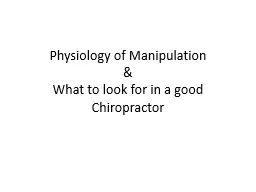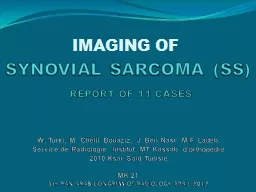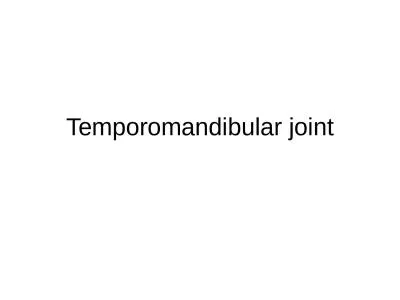PPT-PERCUTANEOUS TREATMENT OF FACET JOINT SYNOVIAL CYST DEVELOPPED IN INTRA DUCTAL
Author : LivingMyBestLife | Published Date : 2022-08-04
S KOUKI W AMORRI M LANDOULSI S BOUGUERRA YAROUS H BOUJEMAA N BEN ABDALLAH Military Hospital of Tunis INTV3 objective To study the results of facet joint intraarticular
Presentation Embed Code
Download Presentation
Download Presentation The PPT/PDF document "PERCUTANEOUS TREATMENT OF FACET JOINT SY..." is the property of its rightful owner. Permission is granted to download and print the materials on this website for personal, non-commercial use only, and to display it on your personal computer provided you do not modify the materials and that you retain all copyright notices contained in the materials. By downloading content from our website, you accept the terms of this agreement.
PERCUTANEOUS TREATMENT OF FACET JOINT SYNOVIAL CYST DEVELOPPED IN INTRA DUCTAL: Transcript
Download Rules Of Document
"PERCUTANEOUS TREATMENT OF FACET JOINT SYNOVIAL CYST DEVELOPPED IN INTRA DUCTAL"The content belongs to its owner. You may download and print it for personal use, without modification, and keep all copyright notices. By downloading, you agree to these terms.
Related Documents

